
On the night of Jun 12/13, 2024, under good, then fair, conditions (due to cirrus arriving in mid-run) I acquired images of the recurrent nova T CrB. This star undergoes outbursts at long intervals of 80 years or so. Its next outburst is predicted to occur soon, perhaps in 2024, and so I've joined the crowd who are monitoring it.
I acquired images in B and V passbands for about 2.5 hours. The star has V = 10.2 or so -- ordinary quiescence.
This recurrent nova brightens from by about 8 magnitudes (!), from V = 10 to about V = 2, around every 80 years. Will we see another outburst this summer?
These are my first observations of this field. I plan to follow it for a few months.
These observations involved:
Notes from the night:
The picture below shows an image of the field of T CrB from Jun 12/13, 2024. The field of view is about 22 arcminutes across.

I've marked the location of several comparison stars, with magnitudes and names taken from the AAVSO's chart.
star name B V
------------------------------------------------------
B 000-BJS-901 11.190 10.566
C 000-BBW-796 10.979 9.887
D 000-BBW-805 11.840 11.187
--------------------------------------------------------------------------
When the target is centered, the finder TV shows this field:
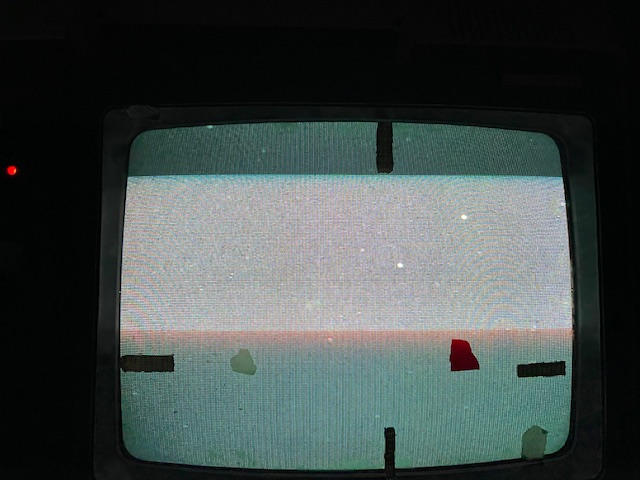
Here's the sky background over the course of the run. Note the clouds coming in second half.
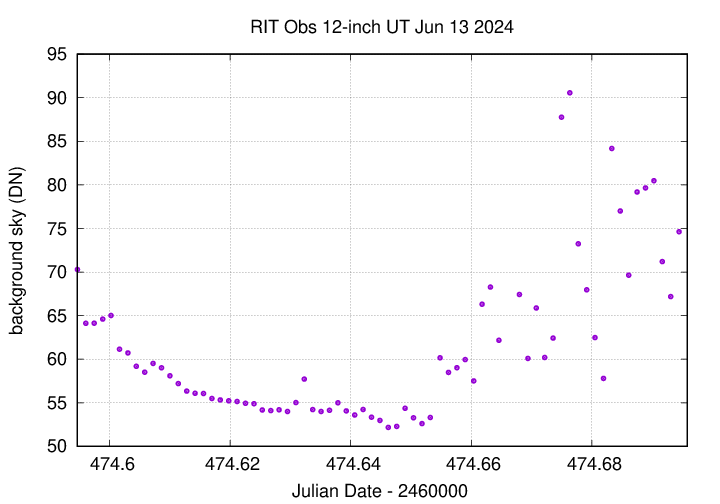
The FWHM improved at JD 474.67 when I refocused.
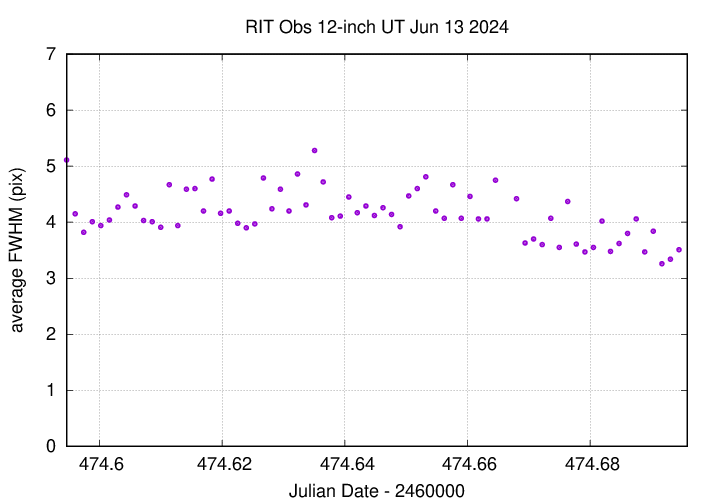
The graph below shows changes in the photometric zeropoint of an ensemble solution of the instrumental magnitudes over the course of the run.
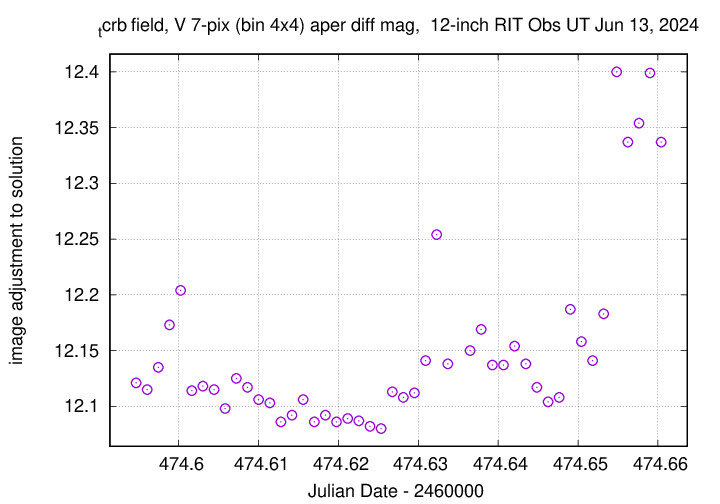
Using aperture photometry with a radius of 7 pixels in V filter (binned 4x4, each pixel is 1.036 arcsec, so a radius of 7.3 arcsec), and 7 pixels in B filter (binned 4x4, each pixel is 1.036 arcsec, so a radius of 7.3 arcsec), I measured the instrumental magnitudes of a number of reference stars and the target. Following the procedures outlined by Kent Honeycutt's article on inhomogeneous ensemble photometry, I used all stars available in each image to define a reference frame, and measured each star against this frame.
Sigma-vs-mag plots show that the floor in V-band was about 0.005 mag, which is not bad. It was 0.008 in B-band, which was hit harder by clouds (and trailing in some images).
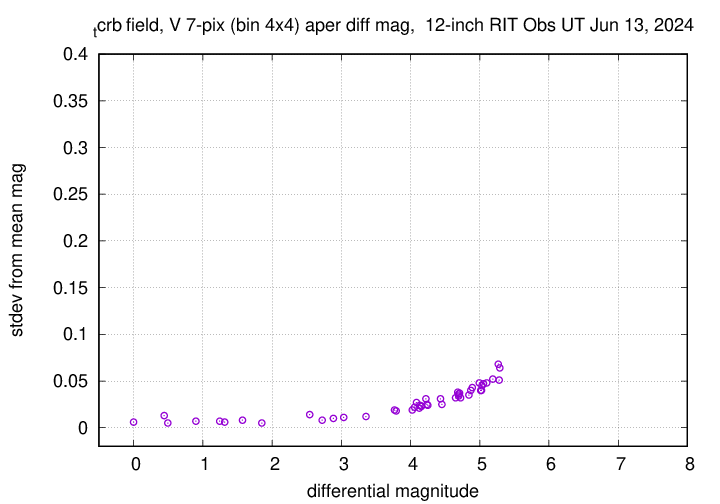
The measurements show a pretty steady brightness.
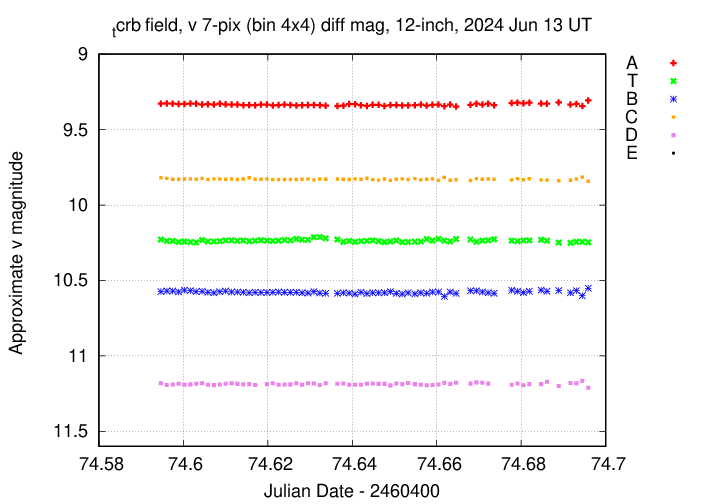
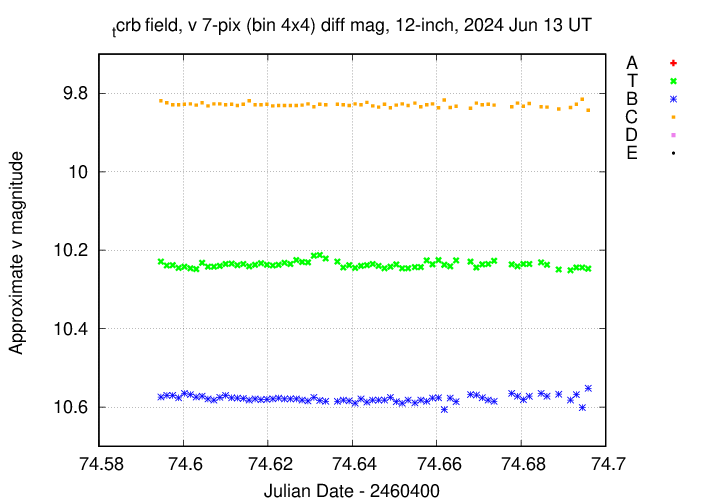
You can download my measurements below. A copy of the header of the file is shown to explain the format. First, the V-band data.
# Measurements of T_Crb made at RIT Obs, UT 2024 Jun 13, # in fair conditions, # by Michael Richmond, # using Meade 12-inch LX200 and ASI 6200MM. # Exposures 30 seconds long, v filter. # Tabulated times are midexposure (FITS header time - half exposure length) # and accurate only to +/- 1 second (??). # 'mag' is a differential magnitude based on ensemble photometry # using a circular aperture of radius 7 pix = 7.2 arcseconds. # which has been shifted so AAVSO 000-BBW-805 has mag=11.187 # which is its V-band magnitude according to AAVSO chart X36711CB. # # UT_day JD HJD mag uncert Jun13.09466 2460474.59466 2460474.59815 10.229 0.010 Jun13.09606 2460474.59606 2460474.59955 10.239 0.010 Jun13.09745 2460474.59745 2460474.60094 10.238 0.010
Now, the B-band data.
# Measurements of T_Crb made at RIT Obs, UT 2024 Jun 13, # in fair conditions, # by Michael Richmond, # using Meade 12-inch LX200 and ASI 6200MM. # Exposures 60 seconds long, b filter. # Tabulated times are midexposure (FITS header time - half exposure length) # and accurate only to +/- 1 second (??). # 'mag' is a differential magnitude based on ensemble photometry # using a circular aperture of radius 7 pix = 7.2 arcseconds. # which has been shifted so AAVSO 000-BBW-805 has mag=11.84 # which is its B-band magnitude according to AAVSO chart X36711CB. # # UT_day JD HJD mag uncert Jun13.09537 2460474.59537 2460474.59886 11.599 0.015 Jun13.09676 2460474.59676 2460474.60025 11.615 0.014 Jun13.09955 2460474.59955 2460474.60304 11.643 0.014
I've submitted these measurements to the AAVSO.